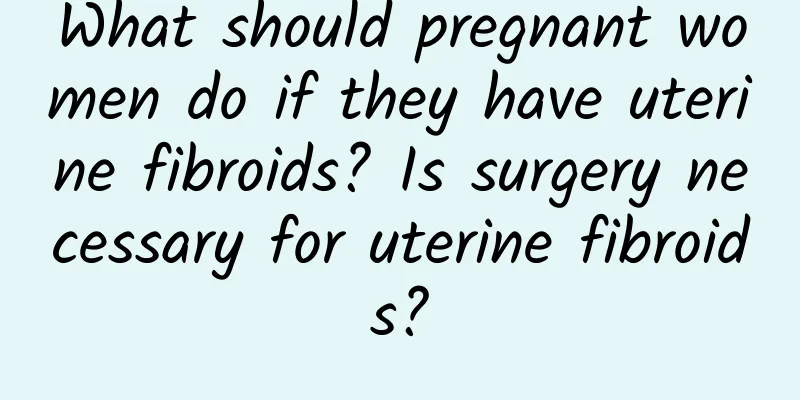How often should ovarian cysts be checked?

|
Ovarian cysts are usually checked every three to six months, depending on your individual situation. The frequency of checkups depends on the size of the cyst, symptoms, and potential health risks. 1. Cyst size and symptoms: If the ovarian cyst is small and has no obvious symptoms, it is usually recommended to have a checkup every six months. In this case, the cyst may not have much impact on the body, and regular monitoring can be used to ensure that it does not increase or change. However, if the cyst begins to increase in size, or symptoms such as lower abdominal pain occur, the frequency of checkups should be increased to once every three months. This helps to detect changes in time and take necessary medical measures. 2. Potential risk monitoring: Ovarian cysts may develop into malignant tumors. Although this is rare, we still need to be vigilant. Regular check-ups are not only to monitor changes in cysts, but also to prevent potential malignant lesions. Early detection of any abnormal changes can greatly increase the success rate of treatment and reduce damage to the body. 3. Personal health status and medical history: Personal health status and medical history will also affect the frequency of reexamination. If there is a family history or other gynecological problems, the doctor may recommend more frequent examinations. It is very important to develop a personalized reexamination plan through close communication with the doctor. 4. Lifestyle and self-monitoring: Maintaining a healthy lifestyle can also help reduce the risk of ovarian cysts. For example, eating a balanced diet, exercising moderately, and avoiding excessive stress. These measures are not only beneficial to overall health, but may also have a positive impact on the management of cysts. Women should perform regular self-examinations and pay attention to the signals sent by the body, such as irregular menstrual cycles or persistent abdominal pain. 5. Regular and comprehensive physical examinations: Even if there are no symptoms of ovarian cysts, women should have regular and comprehensive physical examinations. This not only helps to detect ovarian cysts early, but also can detect other health problems in time. Through a comprehensive physical examination, you can better understand your health status and take measures early. The frequency of follow-up examinations for ovarian cysts needs to be adjusted according to individual circumstances. Maintaining good communication with your doctor, developing an appropriate follow-up plan, and combining it with a healthy lifestyle can effectively manage ovarian cysts and protect your health. I hope these suggestions can provide you with some help to ensure that you pay better attention to your health in your daily life. |
<<: Is it normal to have blood clots after an abortion?
>>: How long does it take to recover from an abortion?
Recommend
What are the 4 manifestations of uterine fibroids?
What are the 4 symptoms of uterine fibroids? Uter...
What tests should be done for vaginitis?
Vaginitis is a common gynecological disease in cl...
How much do you know about the dangers of hyperprolactinemia?
Prolactin is also called prolactin, which is a po...
What is the cause of irregular menstruation in an 11-year-old girl? How to regulate irregular menstruation
Many women have irregular menstruation problems, ...
Six common causes of dysmenorrhea in women
The causes of dysmenorrhea in women are a matter ...
What are the hazards of having an abortion for the first time? The first abortion for a woman will cause 3 harms to the body
When talking about abortion, people will feel hor...
Symptoms of irregular menstruation
Menstrual irregularity refers to abnormalities in...
Don’t be afraid of relatives visiting you when you exercise! Go exercise with your aunt
Whenever a girl has her period, there are always ...
Causes and hazards of cervical hypertrophy
Cervical hypertrophy is usually a symptom caused ...
Use food to adjust hormones and avoid gaining weight again! If you do intermittent fasting wisely, you can still lose weight at the age of 40
If you fast properly, it will not affect your hor...
The common manifestations of dysmenorrhea in daily life
Dysmenorrhea is very common in life. After suffer...
Treatment of adnexitis with anal drip and external powder
Patients with adnexitis may feel pain in the lowe...
What are the main causes of vaginitis?
Vaginitis is an orthopedic disease that may occur...
Can women eat pears during menstruation? Eat strawberries and mangoes
There are some foods that women cannot eat when t...
Three common symptoms of moderate cervical erosion
What are the symptoms of moderate cervical erosio...









